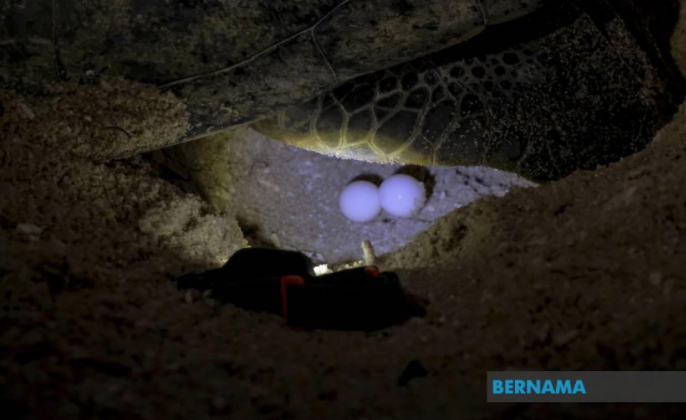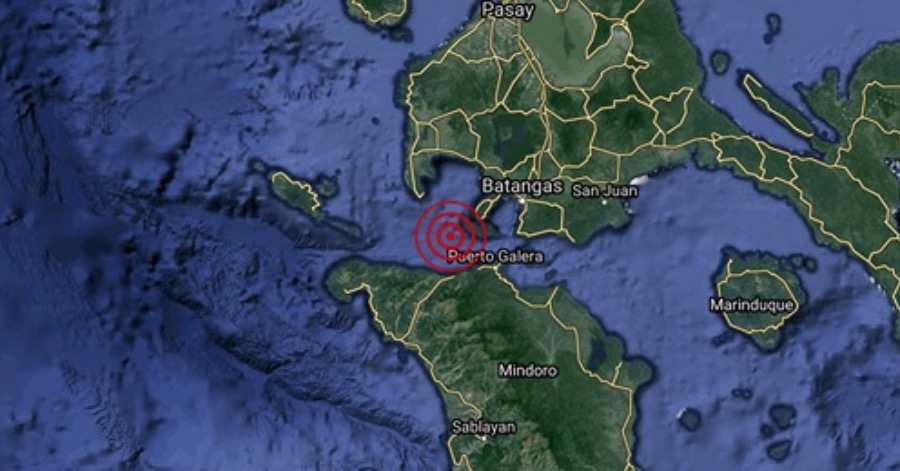PORT DICKSON, Oct 5 — From July to November every year, Hishamudin Abd Manap dutifully walks for three kilometers along the coast and navigates hill slopes for almost 30 minutes daily to collect turtle eggs. He could not be prouder in playing his part in conservation efforts for the endangered marine animals.
Hishamudin, 49, affectionately called Along, who works as a part-time supervisor at a turtle conservation and hatchery center at a resort here, said that he gives his best in carrying out his job, being fully aware of the responsibility of caring for the animals that often get the attention of many people.
“I have been handling turtles for almost 10 years now due to my deep interest in marine life. I am fully aware that if its population is not protected, it may face extinction,” he told Bernama, here, today.
Recounting one of the most challenging things in performing his job, Along said that it is important to ensure that the position and arrangement of turtle eggs to be placed in the turtle hatchery is the same as when collected in the nest.
He said that to avoid confusion, each egg will be marked with its original position using a pencil, and be collected carefully.
“Turtle eggs are sensitive – when the mother lays eggs and they fall into the sand, the baby turtle’s head automatically points towards the surface. That is why it is important that the position is not changed accidentally.
“The turtles will land on the beach up to four times in any one season. The first time they will lay about 150 eggs, then they will go down to the sea and back to the beach again 10 days later to lay eggs, the number of eggs will be slightly reduced, and so on,” he said.
The father of eight said that the egg collection season is from July to November and he will usually supervise between seven and eight nests, while egg collection will be done between 1 am and 3 am as at that time the turtles will lay their eggs.
He said that those who perform this activity must obtain a license to carry out landing, monitoring, and collecting turtle eggs in advance from the Fisheries Department.
“In Negeri Sembilan, only a friend and I have a license to carry out this job. Members of the public are not allowed to collect the eggs at will, as I have had to undergo a landing, monitoring and turtle hatchery management course for that purpose,” he said.
The Negeri Sembilan native said the eggs would be moved to the resort, which runs turtle conservation and hatchery, in collaboration with the Negeri Sembilan Fisheries Department (JPNS), to incubate.
“At the center, we look after the eggs while they incubate, and once they hatch we will put them in a pond. This is part of our efforts to increase the number of turtles on the coast of this state, especially Tanjung Gemuk beach, Port Dickson as they will be released to the ocean when they are slightly bigger in size, at two or three months old,” he said.
Meanwhile, JPNS director Halimi Abu Hanip said that during this year, a total of 170 hawksbill sea turtles have been released in the coastal waters of Negeri Sembilan.
“There are two species of turtles in this state. Apart from the hawksbill, we also have green turtles, with their popular landing locations being in Tanjung Tuan, Port Dickson, and several other locations,” he said.
He urged the public not to disturb the endangered marine animals and not to take their eggs as turtles are protected under the Negeri Sembilan (Turtles and Turtle Eggs) Rules 1976 and the Fisheries Act 1985.
Meanwhile, Universiti Malaysia Terengganu (UMT)’s Sea Turtle Research Unit head Dr. Mohd Uzair Rusli said that it was important to save the species to preserve the balance of the ocean’s ecosystem, especially for the country’s fisheries sector.
He said there are four species of turtles in the country, namely, leatherback, hawksbill, green and olive ridley, and each species has a different role that is important to the ecology of the ocean.
“For example, leatherback turtles serve to control the jellyfish population. The absence of the turtle causes the jellyfish population to increase sharply and this causes a reduction in fish stocks, as the jellyfish will eat the fish eggs and affect the fish supply.
“Meanwhile, the green turtle is important to maintain the health of the fish conservation area, which is seaweed which serves as a place for the young fish to take refuge,” he said.
Hawksbill turtles, on the other hand, serve to eat the crown of thorns starfish that are commonly found in coral reef ecosystems, he explained.
“The absence of hawksbill turtles allows the crown of thorns starfish to breed more aggressively and dominate the coral reef ecosystem which affects the provision of food for fish,” he said.
Sources: BERNAMA









Leave a Comment